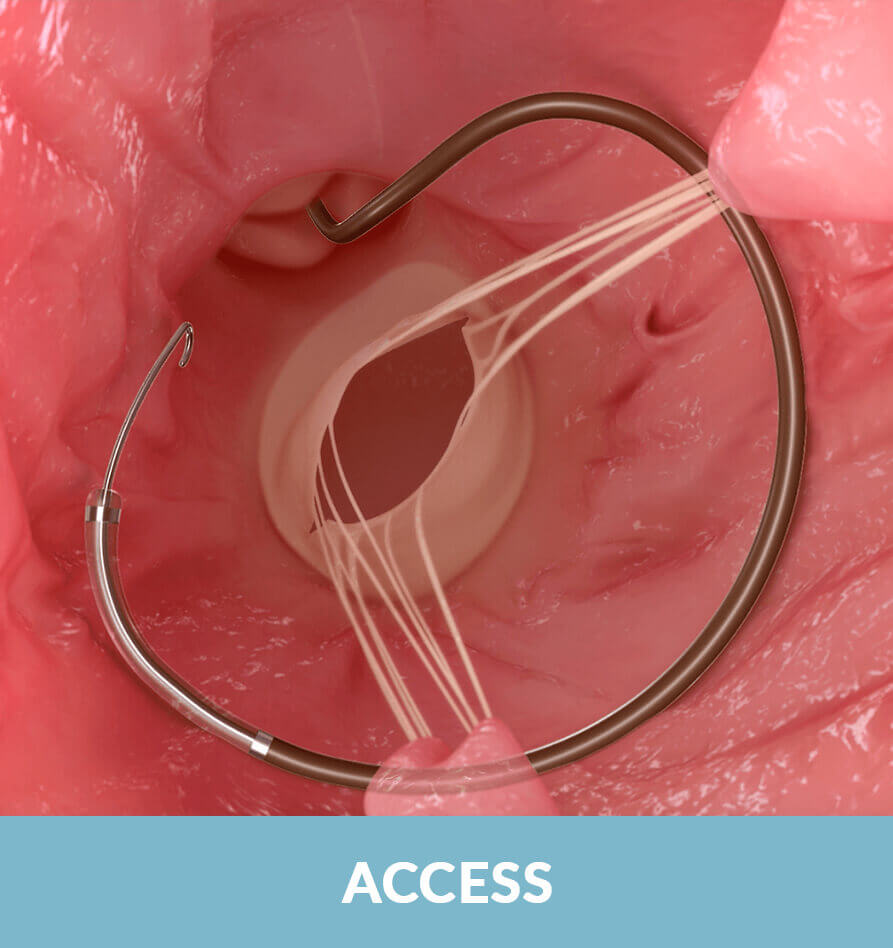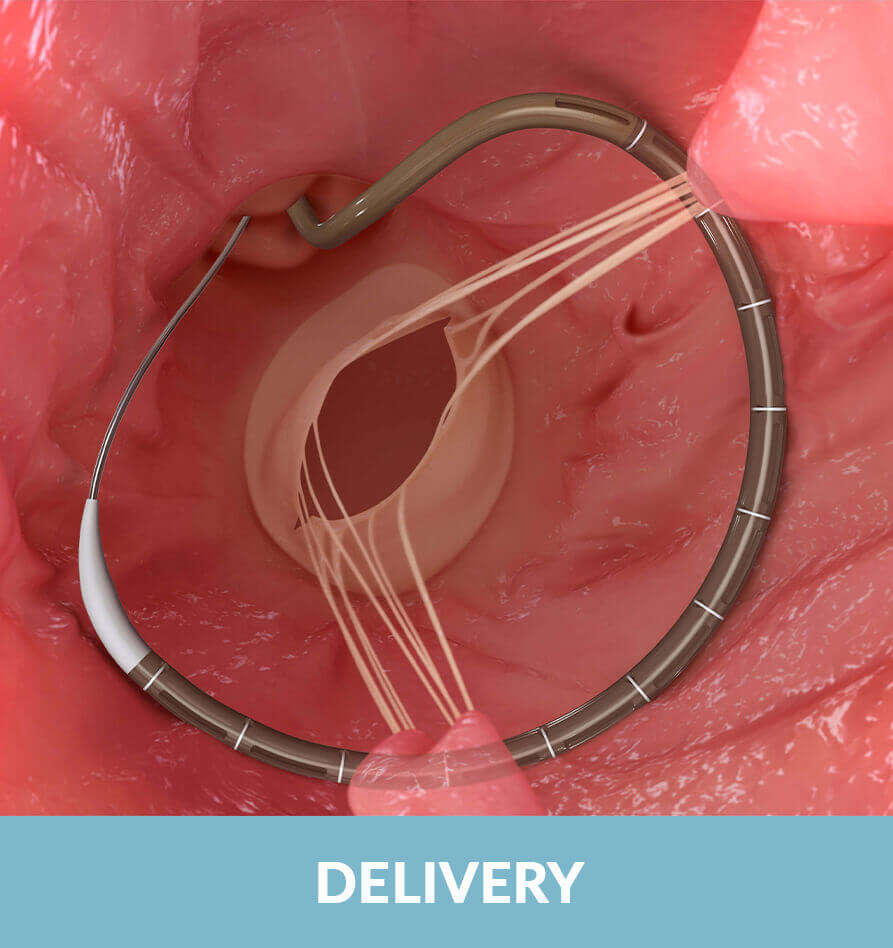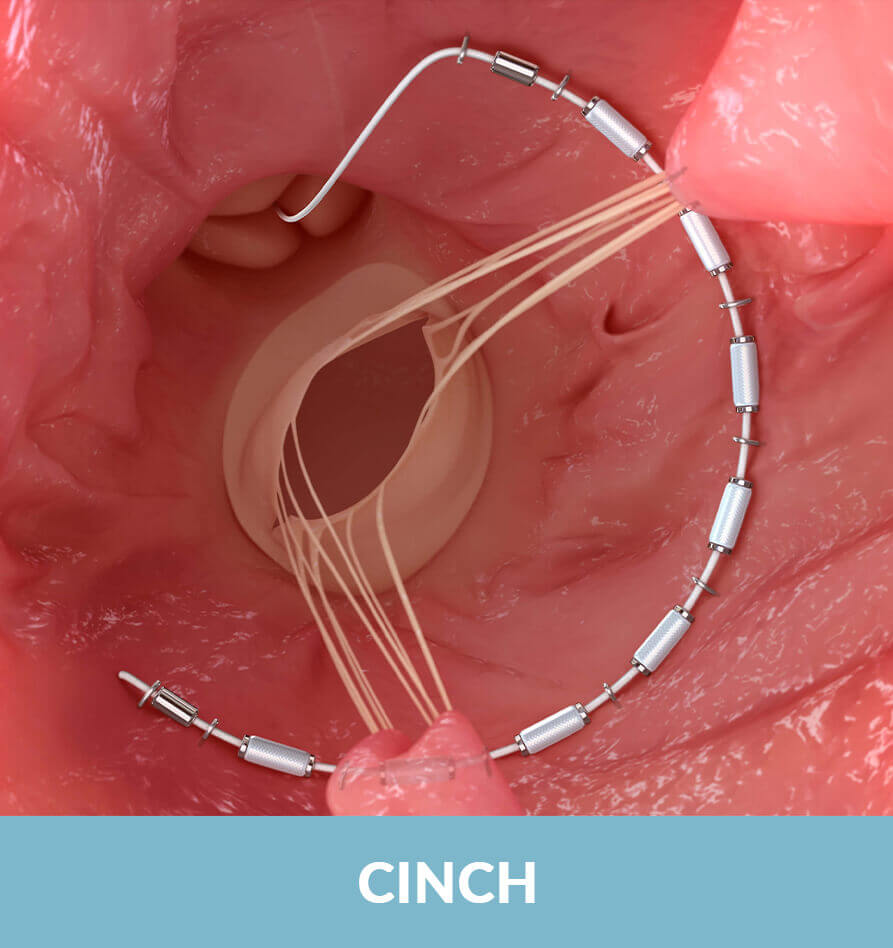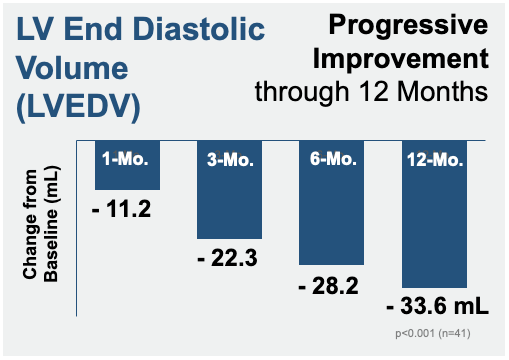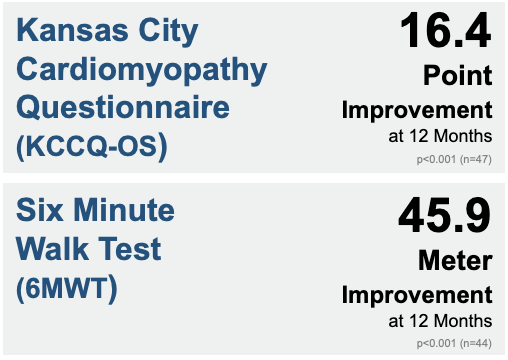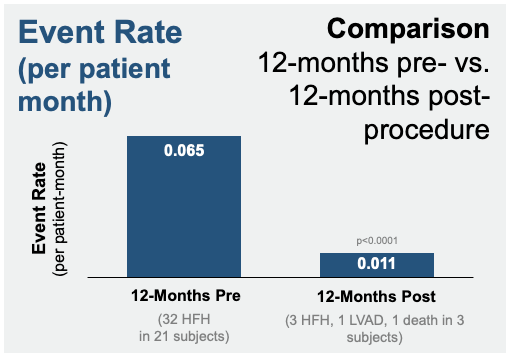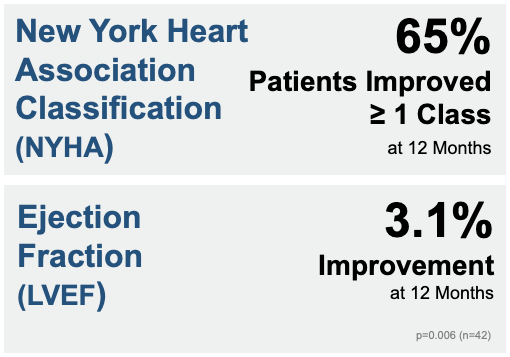Physicians

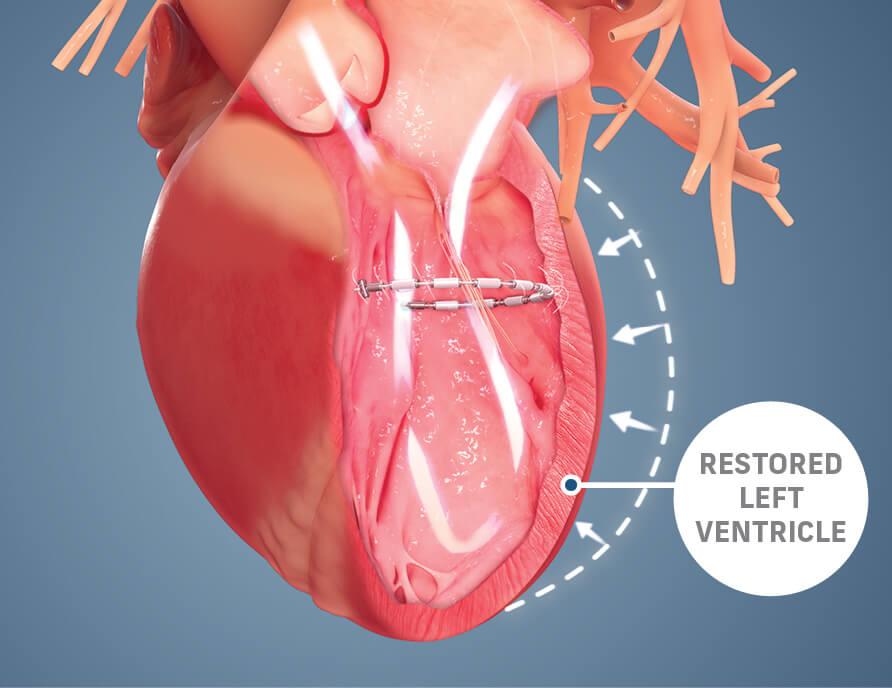
ACCUCINCH SYSTEM GOALS
- Reduce the size of the left ventricle and reduce wall stress
- Provide support and strength to the left ventricle
- Initiate a biological process of reverse remodeling to improve myocardial contractility and overall cardiac function
Improved
Quality of Life
Improved Functional Capacity
Improved Life Expectancy
HOW THE ACCUCINCH SYSTEM WORKS
ACCESS
- The left ventricle (LV) is accessed through the aortic valve using the AccuCinch Guide catheter
- A guide wire is then placed within the LV, behind the chordae, using the AccuCinch NavCath
DELIVERY
- The AccuCinch TracCath is advanced over the guide wire to provide a template for implant delivery
- During AccuCinch Implant delivery, a series of anchors, each separated by a spacer to distribute force, are delivered over a cable are placed into the LV wall
CINCH
- The AccuCinch Implant is then cinched and secured with a nitinol lock to reduce the size of the LV

THE CORCINCH-HF STUDY
Patients are currently being enrolled in The CORCINCH-HF Study, a prospective, randomized, open-label, multicenter, international, clinical safety and efficacy investigation.
1 Mozzafarian D, Benjamin EJ, Go AS, et al. on behalf of the American Heart Association Statistics Committee and Stroke Statistics Subcommittee. Heart disease and stroke statistics—2016 update: a report from the American Heart Association. Circulation. 2016;133:e38-e360.
2 Koelling T, et al. American Heart Journal. Volume 144, Issue 3, Sep 2002, Pages 524-529. Prognostic significance of mitral regurgitation and tricuspid regurgitation in patients with left ventricular systolic dysfunction.

